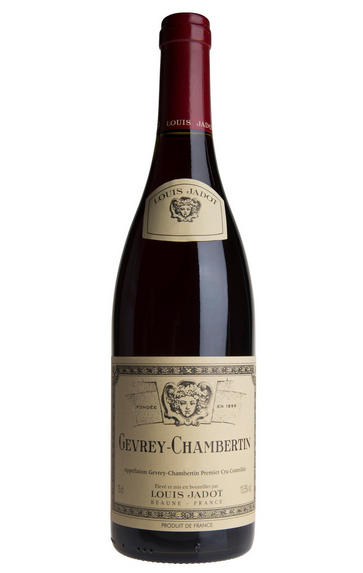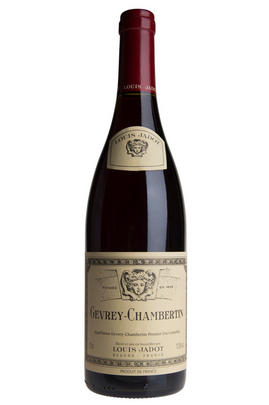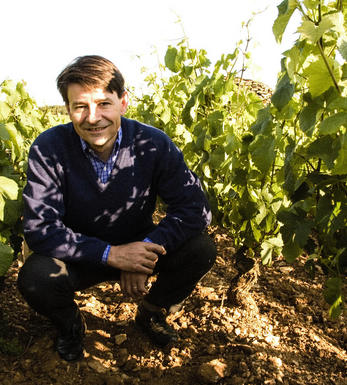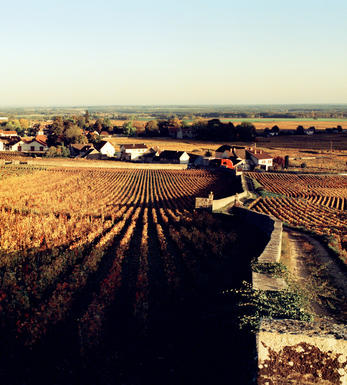
2016 Gevrey-Chambertin, Lavaux Saint-Jacques, 1er Cru, Domaine Louis Jadot, Burgundy

Critics reviews
Neal Martin - 29/12/2017
About this WINE

Louis Jadot
Maison Louis Jadot owns over 60 hectares of vineyard, many of them premier and grand cru, and in Jacques Lardière has one of the most respected winemakers working in Burgundy today, from impressive purpose built cellars on the road to Savigny-les-Beaunes.
The house of Louis Jadot was founded in 1859 though the family had previously been vignerons in the region, acquiring their famous Clos des Ursules in 1826. After the death of the last male members of the family, long-time manager André Gagey took over running the business which was subsequently purchased by the Kopf family, owners of Jadot’s US importers Kobrand. The company is today run by Pierre-Henri Gagey, assisted by head winemaker Jacques Lardière who has been responsible for the company’s wines since 1970.
Recent developments have included the establishment of the tonnellerie Cadus in Ladoix-Serrigny and expansion of the modern winery facilities on the Route de Savigny, with a new white-wine vinification centre completed in 2009. On the vineyard front there have been purchases in the Mâconnais (Domaine Ferret) and the Beaujolais, notably with the Château des Jacques in Moulin-à-Vent and the Château de Bellevue in Morgon.
Jacques Lardière is fascinating to talk to and much prefers to talk about the philosophy of his winemaking than specific techniques. Basically, once healthy grapes have been selected, he wants to let the wine run its own course as much as possible. Every intervention he sees as a closing of a door rather than an opening. So there is no formal pre-maceration, no control over the upper limit of temperature during fermentation, no pumping over because that will accelerate the fermentation process while punching down will not. The wine remains in the vat after the fermentation until the chapeau, the crust of skins and pips, starts to slide down of its own accord, at which time the wine has finished digesting the whole fermentation process.
The wine is then raised in barrel, typically with a good third of new oak across the cellar, perhaps up to 50 per cent in a weaker vintage.
With the whites, Lardière often partially blocks the malolactic fermentation in order to retain acidity and finesse, and the reds are fermented at unusually high temperatures and macerated for up to a month, endowing them with depth of fruit and complexity.
Both the reds and whites are of impeccable quality and reflect the individual terroirs of their respective villages and sites, allied with Lardière`s supreme winemaking skills.
The domaine vineyards belong to various entities: Domaine Louis Jadot itself, Les Héritiers de Louis Jadot, Domaine André Gagey and, on farming contracts, Domaine dela Commaraine and Domaine du Duc de Magenta.
Jasper Morris MW, Burgundy Wine Director and author of the award-winning Inside Burgundy comprehensive handbook.

Burgundy
Burgundy never quite achieved its political ambitions of being a kingdom in its own right, but for many, the region produces some of the most regal red and white wines in the world.
In Burgundy there are 100 different appellations, numerous individual vineyards and more than 3,000 individual producers. Around 15 million cases are produced annually from 26,500ha of vines in Burgundy, which is usually sub-divided into five regions: Chablis in the Yonne department; the Côte de Nuits and Côte de Beaune in the department of the Côte d'Or; and the Chalonnais and Mâconnais in the Saone-et-Loire.
The world's most famous white wine grape may have originated in Burgundy, where there’s a village called Chardonnay (near Mâcon). This marvellous, full-bodied grape responds well to barrel ageing and can produce wines of great complexity that can age for decades. More often than not though, in recent times, the wines are better enjoyed in their youth. The simpler white wines of Chablis to the north, and the Mâconnais in the south, are usually made in stainless steel to preserve freshness.
The heartland for white Burgundy is the Côte de Beaune with its three great villages, Meursault, Puligny-Montrachet and Chassagne-Montrachet. Here the vineyard classification system really comes into its own. On the flattest land, the wines will be classed only as generic Bourgogne Blanc; as the slope begins to rise, the wines are designated by the name of their village. At mid-slope, the finest vineyards (whose wines are bottled separately) are categorised as Premier Cru (eg Les Charmes) or Grand Cru (Le Montrachet).
Though attractive wines can be found in the Côte Chalonnais (Mercurey, Givry), the great red wines of Burgundy are found in the Côte d'Or. The line of magical villages which constitutes the Côte de Nuits, Gevrey-Chambertin, Morey-St Denis, Chambolle-Musigny, Vougeot, Vosne-Romanée and Nuits-St Georges is practically a roll call of great names. The Côte de Beaune competes through such gems as Volnay and Pommard, which are adjacent yet contrasting villages: lacy elegance for the wines of Volnay, while sturdy and more structured in those from Pommard.
Whereas Burgundy used to be considered a veritable minefield because of the complexity of choice, these days it is more of a playground for the adventurous wine lover, thanks to the vast increase in number of quality-conscious, properly-trained producers.

Pinot Noir
Pinot Noir is probably the most frustrating, and at times infuriating, wine grape in the world. However when it is successful, it can produce some of the most sublime wines known to man. This thin-skinned grape which grows in small, tight bunches performs well on well-drained, deepish limestone based subsoils as are found on Burgundy's Côte d'Or.
Pinot Noir is more susceptible than other varieties to over cropping - concentration and varietal character disappear rapidly if yields are excessive and yields as little as 25hl/ha are the norm for some climats of the Côte d`Or.
Because of the thinness of the skins, Pinot Noir wines are lighter in colour, body and tannins. However the best wines have grip, complexity and an intensity of fruit seldom found in wine from other grapes. Young Pinot Noir can smell almost sweet, redolent with freshly crushed raspberries, cherries and redcurrants. When mature, the best wines develop a sensuous, silky mouth feel with the fruit flavours deepening and gamey "sous-bois" nuances emerging.
The best examples are still found in Burgundy, although Pinot Noir`s key role in Champagne should not be forgotten. It is grown throughout the world with notable success in the Carneros and Russian River Valley districts of California, and the Martinborough and Central Otago regions of New Zealand.


Buying options
Add to wishlist
Description
The 2016 Gevrey-Chambertin 1er Cru Lavaux Saint-Jacques has the most outgoing and maybe most exotic aromatic profiles among Jadot's Gevrey premier crus, with kirsch and fig infusing the red and blackberry fruit. The palate is medium-bodied with fine tannin, very focused and tensile even if it does not quite possess the complexity and ambition of the Cazetiers. Very fine.
Neal Martin - 29/12/2017
wine at a glance
Delivery and quality guarantee